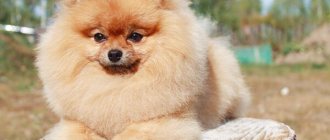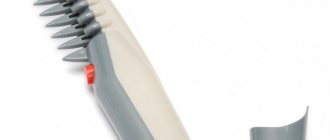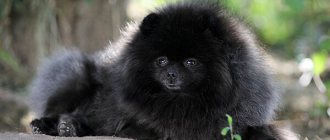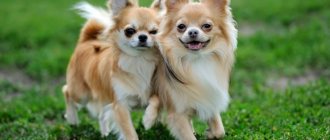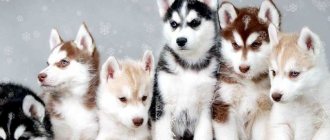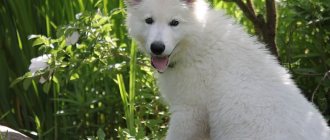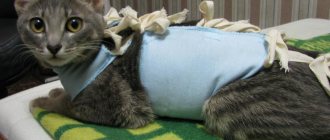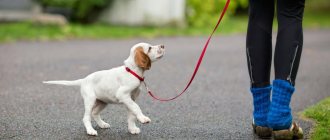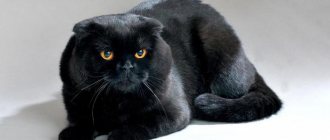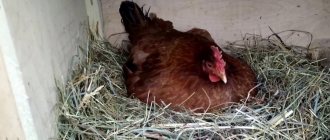Spitz is a breed of dog with thick long hair, which is their decoration and a source of pride. Caring for it is not particularly difficult, but it does take time.
To ensure that your pet always healthy and well-groomed, you need to bathe it regularly , comb it at least twice a week cut it from time to time .
Types of combs
Different tools are used for home and exhibition grooming. With daily care
at home, most often it is enough to use a comb, a massage brush and a slicker brush. During the shedding period, you can also use a furminator for long-haired breeds.
Show dogs require special attention to their coat. During the exhibition the following combs for Spitz dogs will be required:
- brush with natural bristles.
- comb with frequent and rare teeth;
- massage brush;
Professional tools provide thorough care and an aesthetically pleasing appearance to your dog's hair. Below are photos of specialized equipment for cutting Spitz.
When to go to the vet
- if hair falls out in places, in clumps (outside of molting periods),
- if it does not grow for a long time (alopecia),
- if the skin is flaky, itchy, inflamed,
But it’s not about cosmetics or nutrition.
The reason may be:
- allergies (antihistamines, exclusion of allergens (often flea medications)),
- external parasites (topical and injectable preparations for fleas and ticks, including scabies pathogens),
- fungi - trichophytosis, microsporia (shampoos Dermazol, Nizoral),
- bacteria (antibiotics).
- endocrine disorders - seborrhea (antiseborrheic drugs).
Photo: maxpixel.net
Functions of massage brushes
The dog can be quickly cleaned using a massage comb. The ideal option for a Pomeranian is a brush with rubber pads and metal teeth 27 mm long. They comb your hair well and give it extra volume.
At home, when drying a pet's fur, a massage brush is often used. When aged, it helps make hair softer and is used at the final stage of combing.
Shedding
Proper care of a Spitz's coat is the main condition for its attractiveness. When your pet begins to shed, brushing should be done daily using a slicker. Usually the first shedding begins when the puppy is about three months old. Due to the thick and dense undercoat, there will be a lot of fibers during shedding. Brush your pet from tail to head using a massage brush. Regularly care for the fur so that the fluff does not roll into tangles, otherwise they will have to be cut off.
Puppy shedding
Washing at this time will have to be postponed, because the villi will begin to fall out even more. It is best to bathe before shedding, using special cosmetics for long-haired dogs.
During this period, Spitz dogs can even change color, and due to excessive loss of fur, they become little like those cute fluffy “balls”. As the puppy grows, its color becomes uniform and the transitions even out.
This breed sheds twice a year - in autumn and spring. But there is also off-season hair loss, which is not critical.
Advice . If your baby sheds a lot, use larger brushes.
Purpose of slickers
The coat of most Spitz species constantly changes undercoat. Fall, delayed mostly
wool. The slicer helps get rid of dead hair.
Which slicer is better to give preference when choosing:
- The length of the bristles is 15-30 millimeters.
- the ideal option is medium and hard slicers;
- there should be no drops at the ends of the cloves;
During periods of intense shedding, it is recommended to use large breed dogs for more productive grooming.
This comb is ideal for combing paws, cheeks and behind the ears. Many owners also use waterproof jackets when drying their pets' fur.
Owner reviews
Violetta: “I never wanted to cut my dog’s hair short, because, in my opinion, such hair is unpleasant to the touch. We once had our ponytail cut short, and at the slightest tactile contact it was noticeable that the smoothness that, say, was on the back had disappeared.”
Sasha: “The most amazing thing is that after combing a huge mountain of fur, my dog only becomes fluffier. And even easier. The groomer said that you shouldn't put a harness on a Pomeranian because it creates more tangles in the armpits. But I think it’s better to have tangles than to torment my baby with a collar or a noose.”
How to choose a comb for a Spitz
Only by trying different brush options will you be able to determine which brush is ideal for your Pomeranian. However, there are points that you definitely need to pay attention to when choosing.
First of all, you need to look at the teeth of the comb - they should not be sharp. The pointed tips can damage your pet's skin and cause discomfort.
Spitz combs should be metal. They do not create a static effect.
For a Pomeranian, be sure to select a drip stop on the teeth. Cuts with thicker bristle tips cannot comb through the thick orange undercoat and cause pain during the procedure. It is important that the tips are not overly pointed.
To check the density of the bristles, simply place the working surface of the slicer on your palm and determine how comfortable it is for your hand. If the bristles bite your palm and cause discomfort, this brush is not recommended for your dog.
Problems you may encounter
Very often, Spitz owners complain that the dog does not allow itself to be properly brushed. The main thing here is not to succumb to provocations and continue the procedure, holding the pet tightly and calming it down.
It is very important that the procedure becomes pleasant for the baby, and for this you need to choose good tools that will not tear out fur and scratch the skin.
Puppy
Be sure to moisturize the pile so that it does not tangle. Then combing will be not only quick, but also comfortable.
If the dog does not allow itself to be brushed, start doing it in parts. First, comb the back, a little later - the sides, and so on until you have completely combed the dog. For obedience, be sure to reward your Spitz with a treat.
Popular brands
Professional combs for German Spitz are produced by the following manufacturers:
- Show technology.
- Arterus;
- MaxiPin;
- Chris Christensen;
The Artero line includes smooth and double-sided combs, smooth combs, and combs of various sizes for long-haired breeds.
Chris Christensen is a luxury line of grooming tools. The handmade Chris Christensen 004 comb is considered one of the best for Spitz. The company's slicker, Mark X-Tiny Slicker Brush, has also proven effective. Ideal for Pomeranian coats.
MaxiPin specializes in massage brushes for dogs. When choosing a brush for orange, it is best to choose the Keller MaxiPin model in size 216 * 33 mm or 185 * 48 mm with 2.7 cm teeth.
Show Tech produces professional and high-quality combs, massage combs and brushes. The range also includes sizes of dog collars.
Expert advice
Groomers, breeders and experienced owners use dog brushes almost every day. They know how to choose the right instrument, how to care for it, and share tricks with beginners. These tips will help you avoid mistakes in purchasing and using brushes:
- After purchasing, try a clean and new brush on yourself. If you experience discomfort, stop using it. Afterwards, be sure to rinse the instrument and disinfect it.
- Do not use the same brush for all pets. Rinse and disinfect it after each use.
- Dogs of small and medium breeds are often suitable for brushes designed for cats with long hair.
The range of dog grooming brushes allows you to choose one or more ideal models, even for difficult-to-groom dogs. Cost also contributes to this, as does the durability of quality products. There is not a single dog that can do without a brush; even completely “naked” dogs need to be treated with a massage rubber mitten or glove. And, what is very important, the habit of brushing your pet becomes a pleasant time together after just a couple of weeks!
How to properly comb a Spitz
Every owner must know how to properly comb a Spitz.
Before combing the dog, the coat must be sprayed with a special coat care spray. As a cheaper alternative, breeders recommend using Gliss Kur Express conditioning serum. To reduce the concentration, the product can be diluted with water.
Specialized sprays for the care of long-haired dogs can be purchased from Iv San Bernard, Royal Groom and Artero.
First, a moisturizing cream is applied to the Spitz's coat in the chest area and the cleaning procedure begins. The fur should be combed in small strands. Combing is done from the dog's skin itself to the edges of the protective coat. In this case, you should try not to touch the epidermis so as not to injure it.
After brushing, they are brushed through the coat. If the wool slides freely between the teeth, then the wool is well combed.
From the chest, move to the sides, and then to the back of the animal. Careful brushing requires the area near the ears. Mats are more likely to form in this area. The final stage is combing the paws and tail.
Features of hair care
Orange fur is one of the main advantages of the breed. It is long, especially around the neck, where a real “lion’s mane” grows, airy, with a very thick undercoat, easily tangled and matted. Spitz have an arctic type of coat (protects from heat in summer and from cold in winter), so complete removal of hair spoils its structure, the hairs grow thin, weak, and fall off faster. The basic principles for caring for the skin are regularity and plenty of time. Then your Pomeranian will always look healthy and well-groomed.
Recommendations
It is necessary to accustom a Spitz to combing its hair from childhood. The first procedure is carried out in 1 month.
Before bathing, the Spitz is combed. This will prevent the undercoat and rugs from becoming felted.
Before combing your Spitz, the coat must be moistened with a conditioning spray. This will avoid damaging your pet's fragile outer coat.
It is recommended to comb your Spitz up to twice a week for 15 minutes. During the period of active molting, the procedure can be carried out daily.
After combing, the fluffy is carefully processed. Encouragement will help your pet tolerate care in the future.
Source
Was this article helpful?
Thank you for your opinion!
The article was useful. Please share the information with your friends.
Yes
No
X
Please write what is wrong and leave recommendations on the article
Cancel reply
Rate the benefit of the article: Rate the author
Discuss the article:
Other reasons
Allergies to food, animal care products, cleaning products, and medications are accompanied by scratching, redness of the eyes, and cause hair loss around the eyes. It begins to fall out in patches on the body, and a rash appears on the skin.
An unbalanced diet and vitamin deficiency (for example, deficiency of zinc, vitamin D) can cause dry skin, dandruff, and the formation of ulcers. The Spitz will itch all the time.
Weakening of the immune system after illness is often accompanied by helminthic infestations. Parasites living in the intestines “take away” nutrients and release toxic waste products. The animal suffers from loss of fur and weight. Skin diseases may appear.
Infection with skin parasites, mites, and fungal infections is accompanied by severe scratching:
- with violation of the integrity of the skin;
- with baldness around the eyes, ears, mouth (scabies);
- with the formation of small hairless areas with a crust (lichen) on the body.
Alopecia X, or “black skin” disease, is an understudied phenomenon in Spitz dogs, accompanied by complete hair loss throughout the entire body except the head and limbs. At risk are unshed puppies aged 4-6 months and adult Spitz dogs aged 4 years. Often this disease occurs after cutting adult dogs' hair too short or when cutting soft fluff in puppies. First the fur stops growing and then falls out.
Lack of shedding during puppyhood and junior age can lead to significant hair loss, including baldness.
Basic procedures
Grooming consists of combing, washing and cutting; Each procedure has its own frequency and characteristics. After each manipulation of the fur, reward the dog with a treat, especially if it behaved well.
Combing
Regularity: once a week - for a short-haired dog, twice a week - if the Spitz is uncut. Rain while walking is a reason for extra brushing.
Means: combs with teeth of different frequencies, massage brushes - do not damage the hair and do not cause pain to the dog; conditioner and spray - make combing easier and improve appearance.
Select the frequency of the teeth so that it does not allow tangles to pass through, but also does not pull out hairs. Do not use powder brushes: they injure the skin and cause inflammation.
Procedure: carried out at home, on a table, the dog should lie on its side; For the first time, you can brush the puppy on your lap. Mats often form in the groin, under the jaw, near the front legs and behind the ears.
Pay attention to these places first. You need to brush in the direction from the tail to the head, against the growth of the hair - this way the skin is better aerated (especially important for wet wool). At the end, fluff the fur with your fingers - this way it will remain fluffy and stuffed longer.
If your dog has problem hair, you have neglected it, cut the mats yourself. If you will be participating in an exhibition in the near future, it is better to contact a professional groomer: perhaps he will be able to untangle the tangles with the help of anti-tangle products.
Bathing
Regularity: once every 1-2 months and outside the schedule before the exhibition.
Products: Use dog cosmetics for washing. Human (even expensive and well-known) shampoos are not suitable for this purpose.
How to choose dog cosmetics:
- one brand for shampoo, antistatic agent and conditioner,
- hypoallergenic,
- special bleaches - to whiten the areas under the eyes of white Spitz dogs,
- powdered, dry shampoos for animals that do not like to bathe.
Procedure: carefully plug the dog's ears with cotton swabs to prevent water from getting into them, dilute the shampoo and conditioner separately with water, wet the skin well with warm water, distribute the shampoo, lather, rinse.
Treat the washed fur with conditioner and rinse. Wash your Pomeranian only after brushing.
Drying
Regularity: Be sure to dry the fur after each bath. Deep in the orange skin, which remains wet for a long time, an environment favorable for bacteria and fungi is created.
Remedies: do not just leave your dog to dry, be sure to use a hairdryer, which you will have to gradually accustom the animal to.
Procedure: First thoroughly dry (but do not rub!) the dog with a large towel, then dry with a hairdryer, lifting the hairs with a comb and directing warm air to their base. Dry wool needs moisturizing: apply a moisturizer to the under-dried coat and let it dry.
A haircut
Regularity: haircut is necessary occasionally: as needed to remove tangles, and before the exhibition. In any other case, it is not necessary to trim the Pomeranian's coat.
Procedure: the fur is trimmed, overgrown (usually by 1.5-2 years) pieces on the sides are removed, the ears are shaped, outside and inside. Trimmed fur looks more well-groomed.
You can cut your hair for the first time when your Pomeranian is 3 months old. Most often, Pomeranian owners choose the Mouton haircut. Never shave your Pomeranian head!
Diseases and treatment
Pomeranians, like all artificially bred breeds, are prone to certain diseases.
- Dental problems. It is necessary to constantly examine the dog’s teeth yourself and, in case of any deviations, show the animal to a veterinarian-dentist.
- Cough. Occurs due to the special structure of the larynx, as a result of physical activity. This is not dangerous, the cough goes away when the dog calms down.
- Eye problems - excessive tearing from heat, dust, wind. Occurs due to anatomical features, symptoms are relieved with special drops.
- Problems with the thyroid gland - hypothyroidism. Symptoms of this disease are: hair loss, obesity, dermatitis.
- Genetic disease - congenital dwarfism.
- Problems with bones and joints . It can be treated with medication, and you should also ensure that the dog does not jump from high places.
Parasites
Various worms that have found refuge in the dog’s digestive system release harmful substances that provoke permanent poisoning in the animal. In addition, uninvited guests absorb nutrients, creating their deficiency in the Spitz's body.
Mites living on the surface of the skin or a fungal infection usually provoke itching and, as a result, wounds and scratching. Hair falls out. Bald spots may appear, in some cases covered with crust or scales.
The structure of the coat
In the first three months, the coat of Pomeranian Spitz puppies has not yet formed; it is still just fluff. Adult fur begins to grow after three months, gradually turning the puppy into a fluffy dog with a chic “fur coat.” Adult fur grows up to twelve months.
The Pomeranian's coat consists of two parts:
- undercoat;
- guard hair.
If the undercoat is formed of long, soft and spiral-shaped hairs, then the outer coat should be straight and harsh. And some individuals have no guard hair at all. But, if it is present, the hair always stands perpendicular to the dog’s body, due to the thickness of the undercoat. The Pomeranian also has a fluffy “collar” and elegant “pants” on its hind legs. Thick fur is also found on the tail.
Criterias of choice
Our site reminds you: brushes are chosen for the specific type of coat and characteristics of the dog. The functional classification describes the types of tools for a particular task.
For example, the Afghan Hound needs brushes with natural or wooden bristles and an antistatic effect. For the smooth-haired Great Dane, models in the form of rubber mittens are ideal.
It is important to pay attention to the material of the product; wooden ones usually prevent static electricity from appearing and do not delaminate the hair. For coarse wool, it is better to choose synthetic models that are durable.
The fluffy hair of the Samoyed dog is removed with a slicker brush with sparse teeth and a wide base. Also, the ends of metal or synthetic bristles should have drop-shaped tips. The longer the teeth, the thicker the wool they can process. Small brushes are suitable for dogs of modest size.
Which is better?
You can find a huge number of brushes for dogs in pet stores and hypermarkets. In practice, not every one of them justifies its price. But there are brands that have been tested by time and customers.
Among the massage combs, Spitz owners choose Hello Pet. It combs the wool well and does not scratch the skin, even despite the absence of protective droplets on the teeth.
Another popular model is the Trixie Dual. It is ideal for long-haired Spitz dogs. The coat looks well-groomed and beautiful, and, thanks to its good shape, the brush is convenient to use.
As for powder coats, buyers prefer Usond. The teeth remove hair well, and the droplets massage the skin, making the procedure less unpleasant for the animal. Another favorite is . Despite the low price, the brush performs its functions perfectly, removing all dead hair.
There is a large selection of combs on the pet products market, but Spitz owners give particular preference to the Triol and Karlie Perfect Care brands. They have metal and thick, but not sharp teeth, so they remove hair well without injuring the animal.
Eating at home
Like all other dwarf dogs, the Pomeranian Spitz has an excellent appetite and metabolism, as a result of which this breed often suffers from obesity, which should not be allowed in any way.
Even an extra half a kilo for such a small dog is an alarming signal and a reason to reconsider its diet.
The main task for the owner is to provide the dog with all the necessary substances through food:
- Protein – Helps with a dog’s growth, metabolism and overall development.
- Carbohydrates are a source of energy, and for such active dogs as Pomeranians, this is very important.
- Fats improve coat.
- Vitamins and minerals.
If the owner chooses natural food for his dog, then he must make sure that the diet contains:
- Meat.
- Fish.
- Fermented milk products.
- Eggs.
- Porridge.
- Vegetables: zucchini, cucumber, carrots, cabbage.
- Fruits: banana, pear, plum, apples.
Ready-made foods, although they are more expensive, have all the necessary microelements in their composition, and they make life a lot easier for the owners. It is best to choose premium ready-made food; in addition, there are special lines for small breed dogs: “miniature”, “mini”.
Feeding frequency
Experienced dog owners know that adult dogs typically eat once a day, but this system is not suitable for toy breeds. Adult Pomeranians should be fed two to three times a day in small portions. Puppies up to four months five times a day, from four months to six months - four times, from six months three times, ideally, eventually reduce feedings to two.
The earlier the better
Accustom your Spitz to brushing from the first day it arrives in your home. A puppy can be placed on your lap, an older dog can be placed on a table. To prevent her paws from moving apart, cover the table with a cloth or rubber mat. Do not allow your pet to jump from your lap or table, otherwise he risks injuring himself. In addition, by encouraging his independence, you provoke bad behavior in the dog in the future.
If your pet resists the procedure, postpone it for a couple of hours. To help your dog get used to it gradually, try brushing for only 5-6 seconds, repeating the steps several times throughout the day. The dog can be distracted by giving it a hard-to-chew treat: an edible toy made from offal or a bone made from pressed sinews.

